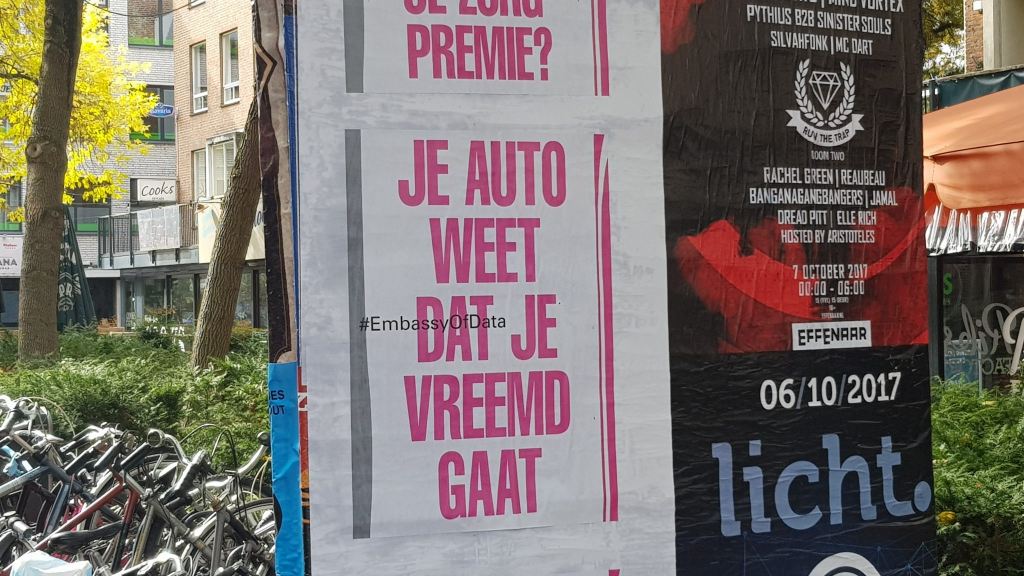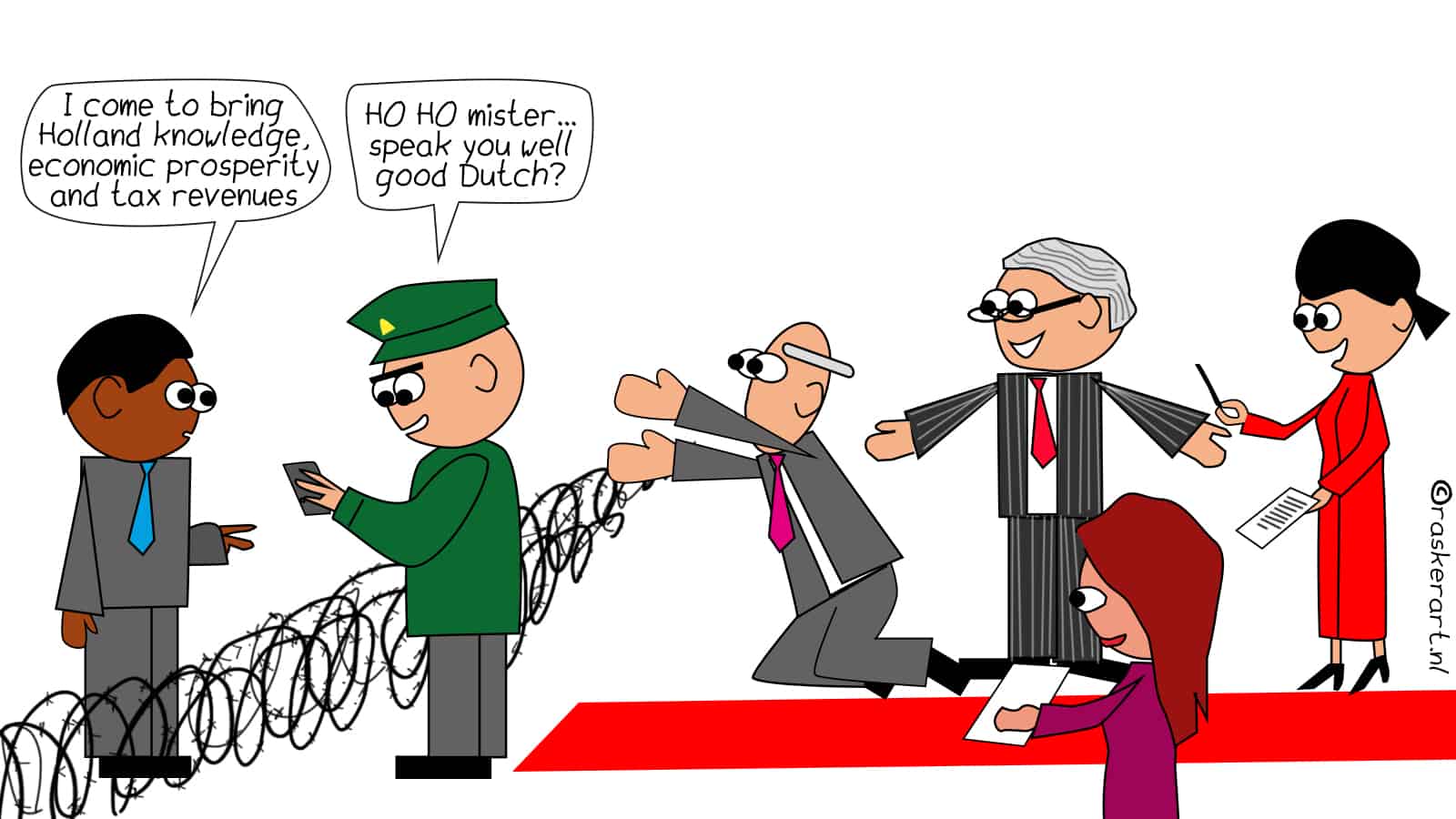

Eindhoven wants to become a smart society. But how does that work? What’s going on in a society like that? Are there any good examples to learn from? DataStudio Eindhoven explores the transition a city has to go through to actually become such a smart society. Each week, we present a new contribution on E52. This week: a preview of the Embassy of Data – Read all the articles here.
The Embassy of Data is the title of one of the eight pavilions of the World Design Event during the Dutch Design Week. This is going to be the biggest capstone of the program of the DATAstudio. The central element in the Embassy is an exhibition about the available data in the public domain of the center of Eindhoven. Klaas Kuitenbrouwer talks with Linda Vlassenrood, program leader of the DATAstudio and curator of the exhibition, about the structure and the backgrounds of the presentation.
“It’s going to be a sort of Living Lab, but clearly different than usual. In most Living Labs, technology is central, but here, people stand in the center, literally and figuratively. The biggest installation on the exhibition will be a fantastic data panorama, designed by Richard Vijgen and inspired by the well-known panorama of Mesdag in Den Haag; a circular installation that spectators can view from the middle. The data panorama has a perimeter of 30 meters and shows the center of Eindhoven viewed from the place of the exhibition [Vrijstraat 11]. It doesn’t particularly show the physical, built environment, but the places in the public domain where data is being collected. The viewer is in the middle and can see all data points.
A second, slightly smaller part of the exhibition forms a kind of reflection of the panorama. This is a circular counter, where employees of the Embassy start conversations with the visitors about how they experience living in their neighborhood and city. We collect their stories. It’s information that usually doesn’t end up in digital data, but it is essential in order to understand how the city works and how it can potentially be improved.
Why this form?
The program of the DATAstudio was about the question of how to promote the development of the smart society. We have focused on handling data because these play a central role in the relationships between government, citizen, and market. One of the conclusions of the DATAstudio is that, for that smart society, it is important that both the citizens and the government speak out more and they should claim more influence on handling data in the public domain, because most data, also in the public domain, is in the hands of market parties.

Therefore, more awareness about the role of data in society is necessary. We continuously read stories about big data and profiling in the newspaper, yet it remains abstract and far away. Sometimes on the street, you get reminded of the fact that data is being collected. On Stratumseind for example, there are signs, but many people don’t see these or just don’t care about it. Because it’s not directly noticeable what is happening and the data collectors also hardly give any further information.
It is clear, however, that everyone in that story is the object. People are being looked at and being read. But the public space belongs to all of us – literally to the public! The exhibition is therefore about different ways to become the subject of data, to (learn to) look at data yourself and take a stand.
Creating awareness about the role of data in society starts with visualizing the collected data and making it legible, we state. That’s what the big installation is about.
The counter is about the value of the individual, subjective point of view of the citizen. Another reason to choose that form, is that these sort of facilities often get whittled down and get replaced by digital services. Particularly at the counters where there’s a lot of contact between government and citizen, there are relationships with a clear shape.
“The public space belongs to all of us – literally to the public!”Linda Vlassenrood, Datastudio Eindhoven

Available data, for whom?
In the installation, we’re working with data we have been able to acquire along the official route at public authorities. So we haven’t been hacking. We started with DICE, the open data portal of the municipality of Eindhoven. The list consists of over 523 data sets, of which only 31 are public. They are mainly Excel lists and hardly contain any real-time data. There are 435 data sets that have been connected to applications and 120 sets contain personal data, which makes them inaccessible. It is currently unclear how and when the sets will be published. The data set about the cadastral values of houses for example. You could also find that information through Funda, but that way you’ll never have the overview. In all honesty, these sets are of course never complete. For example, we received the coordinates of the sensors (depth meters) in the waste containers, but they came from Cure Afvalbeheer (waste management), a market party, so they’re not on the list. Fortunately, they happily give access to their data, which makes the overview even more complete. There are loads of sensors in the city that collect data, without us being able to see it. There is currently also a legislation for it: everyone can buy and place a sensor.
Are there any difficulties?
What you see is that a number of interesting fields of tension have arisen in the role of the government. Without us, as a cultural institution, being able (or wanting to) offer concrete solutions, we think we do have to do something with it when it’s about the development of the smart society.
On the one hand, the municipal government desires openness, on the other hand there is the rightful sensitivity to privacy issues. There’s a tension there.
Another tension is the municipality that wants to promise the development of the smart society, but can only limitedly control what is happening in the data atmosphere right now. Because, by far, the biggest part of the data atmosphere is a private matter.
At this moment, the number of public available data sets is quite disappointing. Data sets are also not mutually connected. There’s hardly any real-time data. Then you can say: that is poorly arranged, it’s behind of it’s fragmented. There is possibly already a piece of smart city – but that would primarily be a private story. In short, that smart society isn’t here yet, by far.
This gap also offers a huge opportunity: it hasn’t been set up yet. So there’s room to shape the ways in which the citizen can join the discussion and become the subject. We will have to start with that now. The way forward isn’t turning on even more sensors and collecting more data. A lot more important is knowing: which questions to ask that data, from the needs of the citizen. If citizens would want to change something, what data do they want to be collected? How do they want to contribute to that? And who should pick up that data? I honestly have to say that I’m proud that this is the outcome of our research and that we can centralize this in the embassy.”








